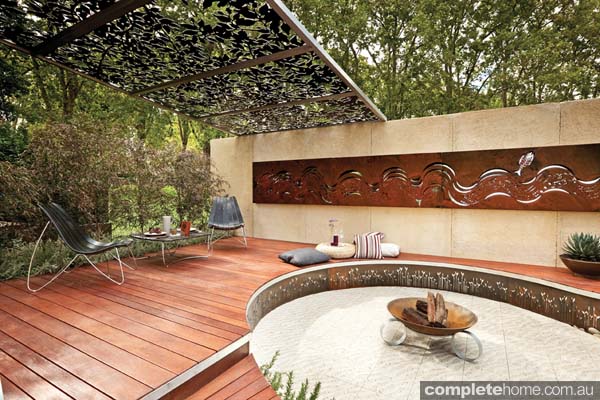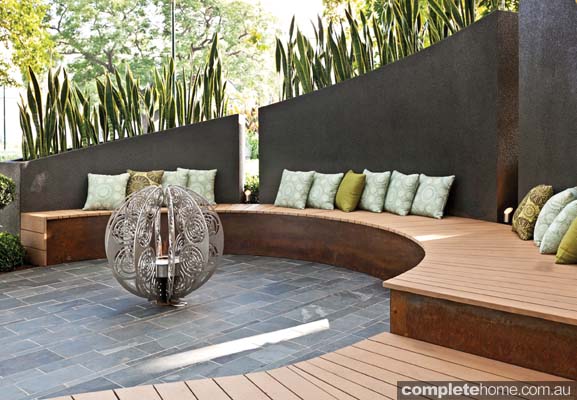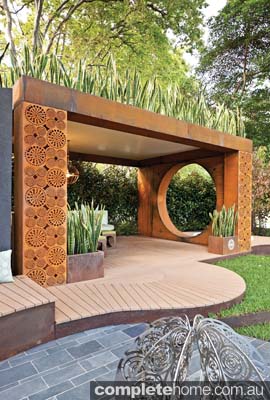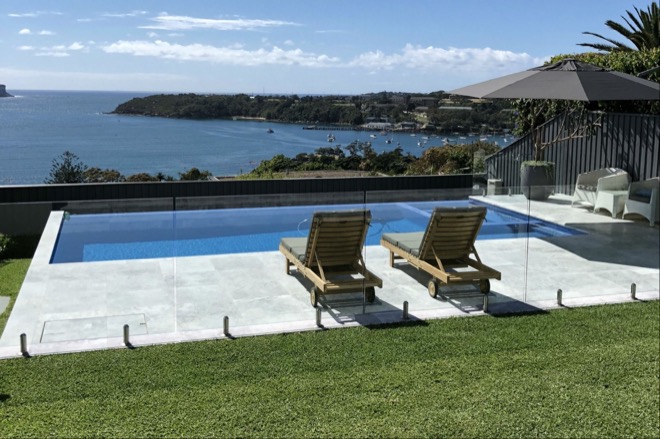Soften the look of your landscape with gentle curves and enticing rounded shapes
Implementing rounded or curved shapes in a garden design is a wonderful way to soften hard edges and create a sense of flow and calm in your outdoor areas. Take a look at any natural landscape and you will find curved lines and round shapes. By echoing these natural characteristics, a backyard design can work in harmony with its natural surrounds to create a relaxing vista.
Sense of connection
“Designing with curves connects us with nature and the sense of the organic rather than a manufactured space,” says Steve Warner, director of Outhouse Design and president of the Australian Institute of Landscape Designers and Managers. “Gardens are created for different preferences, but using curves creates a sense of connection and calm,” he says.
If you are working with a small outdoor space, implementing curves in the design can help you to optimise the space you have in a visually interesting way.
“If you are trying to create the illusion of space or intrigue, a curve around a corner draws the eye and exposes the view gradually, whereas a sharp edge or immediate change in direction can sometimes appear abrupt or harsh,” says Steve. “Creating lawns or pathways with a curved edge or shape is also tactile; it represents more of a natural shape and because of this feels embracing, rather than controlled or clinical.”
Unlimited options
You can use curved lines and rounded shapes in a number of ways and for various purposes within your garden. Curved walls can make for a stunning addition to your outdoor areas and can give the impression of increased space in small areas. A curved entrance or retaining wall can direct the eye or foot traffic to a certain part of the garden, while a curved and winding path can give a garden the appearance of having more depth than it actually does.
Alternatively, by adding curved shapes to a large backyard area you can make an overly open area seem more intimate and welcoming.
Curved lines work extremely well in creating interest by either framing, retaining or dividing up specific living and garden areas such as garden beds and lounge spaces. Steve believes a great application for the use of curves is to reinforce organic lawn shapes.
“Rather than a square lawn, introducing a nice radius to the corners softens the look and is more inviting to the eye,” he says. “Creating a curve in the garden bed rather than a straight line produces more depth.”
Choosing materials
The materials selected and their desired application should be well considered as not every material lends itself to working successfully in a curved shape. For example, a metal edge can allow for more consistency and flexibility when compared to a timber edge.
“A tight radius won’t be effective when using materials that don’t bend or allow for a constant curve or continuous radius,” advises Steve. “For example, building walls with bricks rather than blocks allows you to create tighter radiuses.”
When designing paved areas that may have curved edges, Steve suggests you consider the size of the paver and the material being used. “Large-format pavers allow for an easier cut and using a 100mm cobble edge gives you more flexibility with the curve. Even if you love the idea of curves, do not overdo it because it creates a sense of chaos and defeats the purpose of the synergy and calm that should be your goal,” says Steve.
Expert tip
Curves often work best when paired with straight lines and strict geometric shapes. Variety is the key to creating a sense of balance in your outdoor space, as well as a sense of contrast.
WORDS: Kate McKee
Originally from Backyard & Garden Design Ideas magazine issue 12.2






